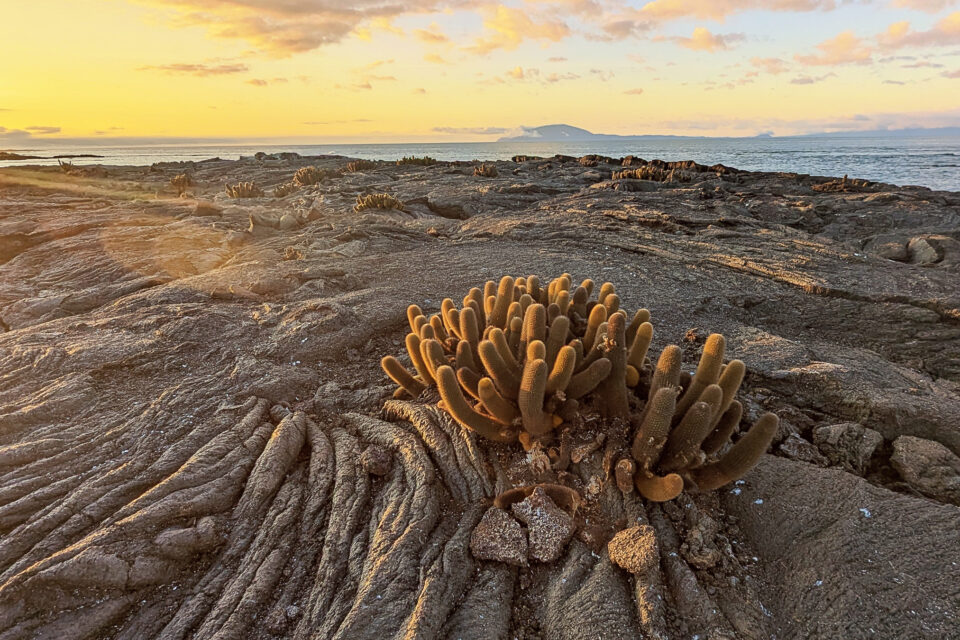

El Niño 2015: Galapagos Plants and Animals
El Niño events impact all areas of Galapagos in both the terrestrial and marine environments, leading to considerable impacts on the islands species.
El Niño events impact all areas of Galapagos in both the terrestrial and marine environments, leading to considerable impacts on the islands species. In Galapagos the increase in rainfall means plant species on the land increase dramatically, changing the landscape from desert like environments to greener surroundings. This in turn benefits a number of species, for example the land iguana (Conolophus spp.). Cactus plants (Opuntia spp.), common in Galapagos, can become too heavy from the excess water stored, and therefore collapse. As the land iguana’s diet contains cactus pads, El Niño years create an abundance of food helping to increase the land iguana population. However, these conditions also favour invasive species such as fireants, cats, goats, tree frogs and rats which puts increased pressure on the endemic species on the island.
In the marine environment there is an introduction of warmer waters, which have two key primary impacts. Firstly the warmer waters, of which only a couple of degrees rise is needed, can cause coral bleaching to occur. This is when corals remove algae (zooxanthellae) living within, turning them completely white. Although this does not kill the coral instantly it does put them under more pressure and therefore subject to mortality. Secondly, the warmer waters also reduced the nutrients availability, which are brought up through colder currents, thus dramatically impacting the food chain.
Galapagos penguins are dependent on this colder current, and therefore are severely affected during El Niño events. The cold-water schools of fish, which the penguins feed on, migrate away during El Niño years meaning their food source becomes scarce. As a result, during El Niño years Galapagos penguins do not breed as there is increased chances of infant mortality and even death of the parents. This is shown most significantly in the past two strong El Niño events where in 1982/83 and 1997/98 a population crash of 77% and 65% occurred, respectively.
Another species to be affected is the marine iguana (Amblyrhynchus cristatus). Unlike the land iguana, a lack of algae available means that marine iguanas are negatively impacted by El Niño events, but this does however, lead to some unique adaptions. During El Niño events the lack of food for marine iguanas doesn’t just mean they become thinner but they also become shorter, with their skeletal structure and snout shrinking in size. Individuals have been documented as reducing in size by up to 20% only to re-grow when food abundance returns. There is also evidence on some islands that marine iguanas are instead eating terrestrial vegetation. However, this change in diet is uncommon, with El Niño events causing the largest mortality rates in marine iguanas. In the 1982-83 El Niño it was recorded up to 70% dying in some populations.
El Niño Watch: Latest update
Three major Pacific Rim weather agencies (the U.S. National Oceanic and Atmospheric Administration, Australia’s Bureau of Meteorology and the Japan Meteorological Agency) have come to the consensus that El Niño 2015 is likely to last into the winter. All favour a strong El Niño event against a weaker one, although as El Niño’s are relatively hard to predict, this is still not certain.
Related articles


Climate change and plastic pollution: the inextricable link

Santa Cruz: The Evolution of the Agricultural Zone



